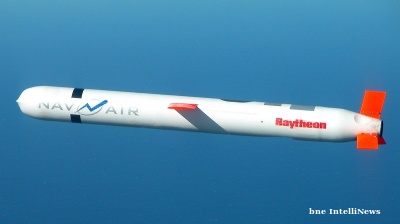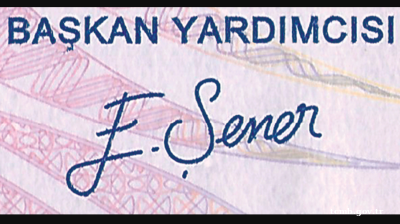The West will impose sanctions on the Central Bank of Russia (CBR) and could freeze around 40-60% of its $643.2bn of international reserves, the EU announced on February 27.
Russian President Vladimir Putin has built a “fiscal fortress” to sanction-proof Russia in a long-anticipated clash with the West over security and the possibility of Ukraine’s eventual membership of Nato. The huge reserves – equivalent to 17 months of import cover, well beyond the three months economists say is the minimum needed to ensure the stability of the ruble – has been at the heart of that fortress.
In a totally unexpected move, the head of the European Commission, Ursula von der Leyen, announced on the night of February 27 that the European Union and its partners decided to “paralyse” the assets of the CBR.
“[The EU] will freeze its transactions. And it will deprive [Russia] of the opportunity to sell these assets,” she said. Plans to introduce restrictive measures, “will prevent the Bank of Russia from using its own international reserves to ease the impact of Western sanctions,” the leaders of the European Union, Canada, France, Germany, Italy, the UK and the US announced in a joint statement, without giving any details of how this was to be achieved or how much money from Russia’s reserves is actually exposed to the sanctions.
The CBR holds dollars, euros, yen, yuan and gold in its reserves basket. In the last update of the details of the currency basket that makes up Russia’s reserves it had 12% in France, 5% in the UK, 10% in Germany and some smaller amounts in other EU countries.
The amount of reserves in the US is 16.4% but of that 6.6% ($38.6bn) is in US banks and exposed to sanctions, according to Elina Ribakova, deputy chief economist with the Institute of International Finance (IIF). The rest is elsewhere including physical dollar cash in Russia.
The inclusion of the EU countries in possible sanctions against the CBR is an entirely new sanction that has come out of the blue in just the last few days.
Taken together the EU countries account for 39% of the reserves ($311bn) placed in the securities of foreign issuers, of which $152bn is in cash in deposits of foreign banks, reports RBK – a significant amount of the reserves. Counting out the EU and US money would reduce Russia’s cash pile with the CBR to a total of $344.5bn in reserves – half its current amount – but that is still nine months of import cover and more than enough to protect the value of the currency in normal circumstances.
Another $132bn is held as monetary gold and physically in Russia (nearly 74mn troy ounces). And there is another $30bn in reserves at the International Monetary Fund (IMF) as special drawing rights (SDRs) that cannot be sanctioned.
Limited operations
With the freezing of half its reserves placed in dollars, euros and pounds sterling, the CBR will have significantly fewer resources to carry out foreign exchange interventions in support of the ruble, says RBK.
And it will need them. The central bank began interventions in the currency market on February 24 to calm the shock caused by the invasion of Ukraine. It sold foreign currency from its reserves for the first time since 2014, following the shock caused by the annexation of the Crimea that year.
As the Russian army crossed the border last week, the exchange rate of the dollar against the ruble crashed to RUB90 – its weakest ever and down from the fair value of cRUB70 to the dollar – before the CBR stepped in and stabilised the rate, bringing it back to RUB83 as of the close of trading on February 26.
The central bank has not yet disclosed how much currency was spent on the first day of interventions, but after the announcement of the CBR sanctions the selling of the ruble in this coming week’s trading is expected to be even more intense and the CBR will have to burn through even more of its now reduced cash pile. Some analysts have already started asking if Russia will face another 1998 financial meltdown and exhaust its reserves.
The sanctions on the CBR also affect the share of reserves coverage of the external debt.
The Moody's rating agency reported that the CBR’s foreign exchange cash reserves of $469bn at the end of January (excluding gold) were more than three times the total amount of upcoming payments on the external debt of Russian residents for 2022 and equalled the entire external debt of the country.
However, if the US, EU, UK and Canada freeze the assets of the CBR, then it could lose access to up to 60% ($340bn) of its reserves, based on the mid-2021 data, according to RBK. That means Russia still has more than enough to cover these obligations, but the wide margin it enjoyed before is almost all gone.
In April and July 2022, the government will have to redeem external bond issues for $1.2bn, according to data from the Central Bank of Russia, as cited by RBK – relatively small amounts. However, rating agencies have already warned that they see the risk that Russia may experience difficulties in servicing external public debt due to sanctions. For example, S&P Global said on February 25 that under certain scenarios, tough sanctions “could undermine the Russian government’s technical ability or willingness to pay foreign debt on time”.
Sanctions details yet to be revealed
This is not the first time that a central bank has been hit with sanctions: the central banks of Afghanistan, Iran, Syria and Venezuela have all been put under Western sanctions, but never has a bank in such a big and important country as Russia been targeted. It is currently not clear just how much of the CBR’s cash is in danger.
“It is better to wait for exact wording of the latest sanctions on CBR, I guess there will be some important caveats. Besides, there is a slight chance, I’d say, the Western coalition postpones these CBR sanctions implementation if the negotiations between Russia and Ukraine begin,” Ivan Tkachev, economics editor at RBK told bne IntelliNews, referring to an announcement on February 27 that government representatives from Russia, Belarus and Ukraine were planning to meet on the Belarusian border to start talks.
The speed and extent of the sanctions have surprised observers, as several of the sanctions announced in the last two days, including closing EU airspace to Russian planes and sanctions on the CBR, are entirely new and have not been discussed before.
“Western rapid sanctions escalation (with much room left for further tightening) has been rather unexpected for Russia, who for a long time relied on internal disagreements and EU indecisiveness,” said Tkachev. “I think Vladimir Putin’s calculus was that the West again would drag on with sanctions deployment, but what we see is not only real severe sanctions, but also a dramatic shift of EU and US approach.”
The central bank has been reducing its exposure to dollar-based assets in recent years and has had a policy of increasing the share of gold in reserves since 2007, which now make up some 20% of reserves – the physical gold is all inside Russia and cannot be sanctioned. Moreover, gold prices have been rising as the current crisis got worse and broke above $1,900 per oz at the end of last week, up 4% YTD.
“Russia has a large share of its cash onshore and lots of gold that will give it a measure of protection against these sanctions but just how exposed remains unclear,” the IIF’s Ribakova told bne IntelliNews in a phone interview on February 27.
Ribakova said that despite reserves that are triple what is needed to ensure the stability of the ruble, because the exchange rate has become such a sensitive barometer of geopolitics it is expected to crash when trading starts on Monday to “some number”, said Ribakova.
The ruble fair rate should be around RUB70 to the dollar, economists say, but as the crisis built it touched the crisis level of RUB80 recently, and blew through RUB90 after Russia attacked Ukraine on February 24. The exchange rate closed to RUB84.25 on February 25 but is expected to open on February 28 at more than RUB100 to the dollar or more, as investors fear the CBR will be cut off from half its reserves.
There were almost immediately anti-war protests across Russia on the day of the attack but the majority of the population seems to be remaining on the fence. However, if the value of the ruble plunges yet again then that will directly affect the entire Russian population and could lead to bigger protests.
“The West now openly suggests that their aim should be to hit the broader economy hard in hope that Russian people will turn against President Putin. This is naive, of course. But whether it works or not, the Russian economy will suffer anyway and Russian people will feel the pain,” said Tkachev.
How bad is it really?
A big question mark remains over just how much money will be caught up in the new sanctions on the CBR. The problem is the CBR reports the makeup of the currency basket with a six-month delay so as not to affect the exchange rates, and it has had plenty of time to prepare.
A big unknown is whether the inclusion of European currencies in the possible CBR sanctions has caught the Kremlin by surprise or not. While the possible sanctions on US assets and cash were long anticipated and led the CBR to de-dollarise and to sell its US T-bills, the inclusion of its European assets may have been missed.
“I believe the Russian government could imagine such sanctions unilaterally levied by the US targeting USD-denominated assets (that’s why they were actively de-dollarising), but they genuinely believed the EU wouldn’t join these measures, so Euro assets were thought to be relatively safe,” said Tkachev. “Even if the CBR, in a fire-sale regime, transferred USD/EUR assets to yuan and gold lately, that would make less practical sense given that potential firepower to conduct FX interventions to prop up the ruble is obviously concentrated in hard currencies, not yuan or other less liquid instruments. So if the West indeed freezes or make unusable most of the CBR reserves (which is still a question – we need details), we could see the ruble plunge to 100 per dollar or above on Monday when trading starts or more radical measures such as capital controls/restrictions on ruble-dollar conversion.”
Tkachev said that if capital controls were reintroduced – the last “surrender requirements” on companies earning dollars were abandoned at the start of the noughties – then Russia could see the reappearance of black markets as the people flee to cash dollars again – the hallmark of the 1990s instability that Putin is so widely credited with ending.
“These are just scenarios right now, but everything is possible now,” said Tkachev.
But it is still not clear to what extent the CBR is prepared for this shock. Details of exactly what these allocations are invested into are not revealed, making it even harder to assess what money is exposed to sanctions.
As of February 1, the CBR held $94.7bn in accounts and deposits with other central banks, the Bank for International Settlements and the IMF, according to the Bank of Russia. Some of these funds are kept in the national central banks of some eurozone countries, according to the Central Banking resource, citing the European Central Bank. Part of these reserves – from several billion to several tens of billions of euros – are also kept in the German Bundesbank, which are now also exposed to sanctions.
“The Russian government has physical cash as well as US dollars onshore, but it is not clear what percentage it is, what share it is of the reserves,” said Ribakova. “But it may not be enough. The reserves were built up to deal with sanctions mounting up, but now they are all coming at once. That could cause a panic and it will definitely impact the economy."
As part of its reserves Russia has $174.9bn in the National Welfare Fund (NWF), according to the Ministry of Finance, that Ribakova says is probably in much more “conservative investments”, although again the details are not clear.
SWIFT sanctions
The West, and Germany in particular, have also announced that they will cut Russia off from the SWIFT messaging service that allows international transactions.
While the details are still unclear, the ban on SWIFT will be applied to only certain banks and some, dealing with energy payments, may be excluded. Gazprombank, the financial arm of the gas behemoth, is an obvious candidate for an exemption.
The problem with cutting Russia off from SWIFT completely is that western countries, and Germany in particular, would be unable to pay for Russian gas imports that could lead to an even bigger energy crisis than Europe has been experiencing in the last year, as well as possible financial instability in the European banking sector.
More details on the exact nature of the SWIFT ban are anticipated to emerge in the coming days. But the inclusion of SWIFT in the sanctions package is a surprise, as Germany had been strongly resisting it until now. An article in Handelsblatt reported earlier this month that German government officials were saying that SWIFT sanctions were “off the table.” The shock that has accompanied the invasion of Ukraine has clearly changed European leaders' calculus.
Energy payments are a European headache, but banning Russia from SWIFT creates another headache for the government, as it makes it very difficult to repay its international debt obligations. The Russian government has very little external debt compared to its international peers, but it still has external debt of hundreds of billions of dollars, equivalent to 18% of GDP. Without SWIFT it cannot service these debts and would be forced into technical default – something the Russian government will be very keen to avoid.
However, in yet another piece of evidence of the long-term planning Putin has put into this campaign, starting in 2016 Russia started adding a clause to its Eurobond covenants giving it the option of paying off its bond obligations in rubles if it was unable to settle coupon payments or redemptions in foreign exchange. These “ruble settlement” clauses apply to all the bonds issued since 2016, but the majority of Russia’s Eurobonds do not enjoy this clause.
Other sanctions
In parallel to the sanctions on the financial system and CBR, the western powers have also rolled out a range of export bans on technology to Russia, some of which will be as painful as the ban on moving money or freezing access to the CBR reserves.
“Western chipmakers have suspended deliveries to Russia, which will affect ordinary business and civilian industry. There are going to be no more imports of Western cars from Europe. The EU ban on aircraft exports was quite shocking, as it will stop leasing of Airbus planes to Russian airlines as well as their maintenance and spare parts provision and also will lead to halt of some Boeing exports through leasing schemes by European air leasing companies,” said Tkachev. “This is really huge and was unimaginable just days ago.”
German Chancellor Olaf Scholz announced a range of new measures at a special Sunday meeting of the Bundestag that include the closure of German airspace to Russian flights from 3pm the same day, a partial ban on SWIFT for Russian banks and the decision that Germany plans to build its first two LNG terminals – an obvious threat to give up on Russian gas supplies in the foreseeable future. He also gave permission for indirect exports of German-made defensive weapons to be sent to Ukraine and announced an additional €100bn of defence spending aid for Ukraine.
“Europe’s restrictions on travel from Russia, visa applications and deposits from rich Russians too reflect the strategic shift to broad and rather indiscriminate isolation of Russia from other worlds even if it will help Putin to bring home more capital,” said Tkachev. “It’s understood that those sanctions will stay indefinitely even after this invasion ends.”
News

Mongolia’s PM ousted as party infighting topples government
Right to challenge sacking means battle may not be over. Observer says confrontation is linked to desire for control of country’s vast coal resources.

Ex-chairman of Istanbul-listed Sisecam hit with travel ban in Can Holding investigation
Company is controlled by "Ataturk" bank Isbank, which has previously been in the crosshairs of Turkish president Erdogan.

Ghana’s dormant TOR refinery to restart crude operations by October-end
Ghana has long struggled to translate its crude output into refined fuel security. Successive governments have pledged to revive TOR, which has faced years of debt, mismanagement, and technical breakdowns.

No Tomahawks for Ukraine, Trump to meet Putin in Hungary
The US cannot deplete its own stockpile of Tomahawk cruise missiles by supplying them to Ukraine, President Donald Trump said at a press conference on October 16 following a phone conversation with Russian President Vladimir Putin.




